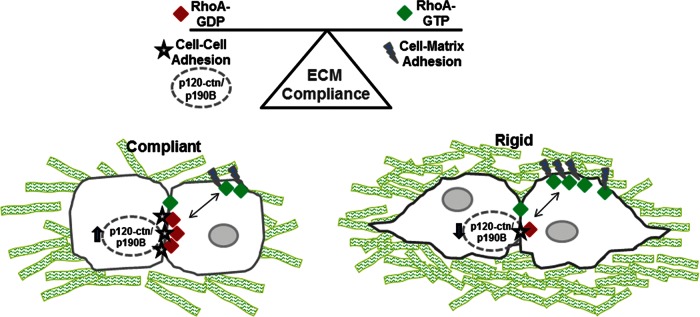FIGURE 6:

Model of RhoA regulation by cross-talk between cell–cell contacts and cell–matrix adhesions. Changes in collagen matrix compliance regulate spatial RhoA activity within mammary epithelial cells. The activity is regulated by a complex of p120-catenin and p190B localized at cell–cell contacts. In a compliant microenvironment this complex is up-regulated to hold a pool of RhoA inactive at the cell–cell contacts and at the same time may help to stabilize cell–cell contacts. Under rigid conditions, less p190B associates with p120-catenin, and more RhoA is free to localize to sites of cell–matrix adhesion, where RhoA is activated, presumably by a RhoGEF. This local activation of RhoA likely helps to counterbalance the stiffness of the extracellular environment. This model suggests that cross-talk between cell–cell contacts and cell–matrix adhesions is generated by the p190B–p120-catenin complex to spatially regulate RhoA activity in response to changes in tensional homeostasis.
